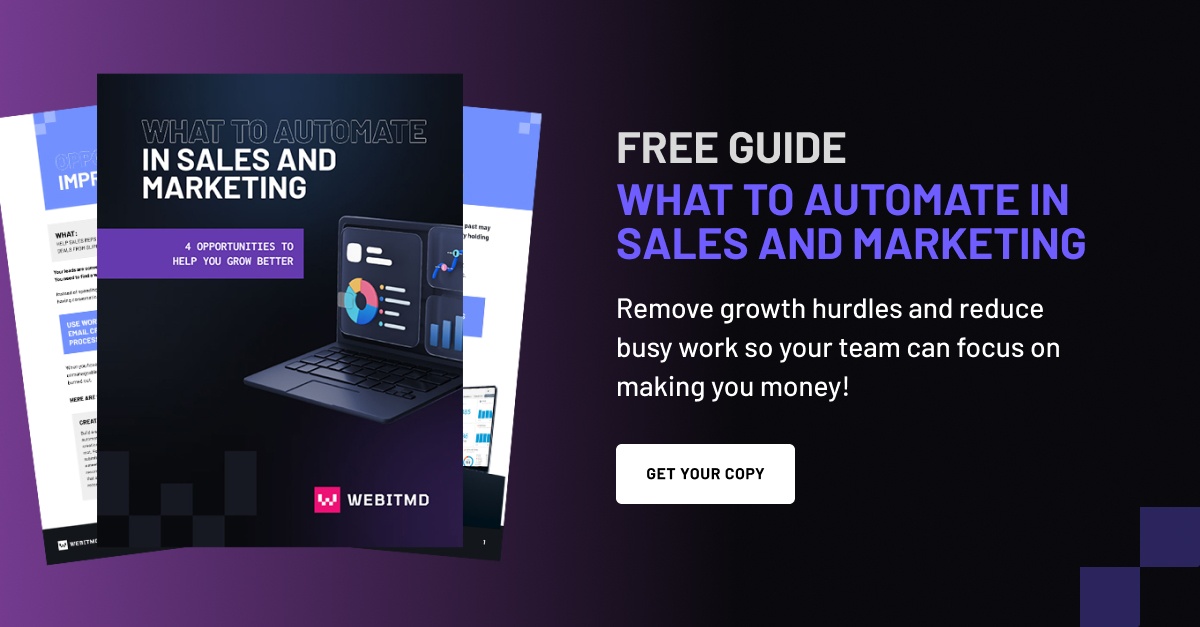In a world where "data-driven" has become the default descriptor for any modern business, it's easy to forget an important truth: having tons of data means absolutely nothing if you can't trust it, find it, or use it effectively.
At WEBITMD, we've seen companies of all sizes struggle with the same scenario. They've invested heavily in collecting customer data, market insights, and performance metrics - only to find themselves drowning in information while still feeling like they're making decisions in the dark.
The missing piece? A thoughtful data governance strategy.
Now, "data governance" sounds about as exciting as organizing your closet. But stick with us, because implementing even basic data governance principles can be the difference between your data being a valuable asset or an expensive liability.
What is Data Governance (Without the Corporate Jargon)?
Let's cut through the buzzwords. At its core, data governance is simply the system you use to ensure your data is accurate, accessible, consistent, and protected. It's about answering questions like:
- Who can access which data in our organization?
- How do we know if our data is accurate?
- Where does specific information live in our systems?
- Who's responsible for maintaining different data sets?
- How do we handle sensitive customer information?
Think of data governance as the rulebook and roadmap for your company's information. Without it, you're essentially playing a high-stakes game where nobody knows the rules, the field keeps changing size, and someone occasionally moves the goalposts when you're not looking.
The Real-World Cost of Poor Data Governance
The consequences of neglecting data governance aren't theoretical - they're hitting businesses where it hurts most: their bottom line and their reputation.
Research from Gartner suggests that poor data quality costs organizations an average of $12.9 million annually. That's not accounting for the harder-to-quantify costs like missed opportunities, eroded customer trust, and decision paralysis.
Four Signs Your Business Needs a Data Governance Strategy Now
Not sure if data governance should be a priority for your organization? Here are four telltale signs to evaluate:
1. Your team uses phrases like "I don't trust these numbers"
When we hear marketing or sales teams expressing doubt about their own dashboards and reports, it's a massive red flag. Data skepticism within your organization is like an immune system response - it's telling you something is wrong. If people don't trust the data, they'll either ignore it entirely or spend countless hours trying to verify it themselves.
2. Different departments report conflicting metrics
Have you ever been in a meeting where the marketing team reports one conversion rate while the sales team has a completely different number? When departments operate with their own data silos and definitions, it's impossible to align on goals and performance.
3. Compliance gives your team headaches
If preparing for audits or responding to customer data requests feels like a fire drill every time, your data governance needs serious attention. With regulations like GDPR, CCPA, and industry-specific requirements becoming more stringent, ad hoc approaches to data management are increasingly risky.
4. Your data analytics initiatives repeatedly stall
Many organizations invest in sophisticated BI tools or data science initiatives only to see them fail to deliver meaningful insights. Often, the culprit isn't the technology but the underlying data quality and accessibility issues that no fancy dashboard can fix.
Starting Small: A Practical Approach to Data Governance
The good news is that effective data governance doesn't require a massive organizational overhaul or expensive new systems. In fact, we typically recommend clients start with these focused initiatives:
Create a Data Dictionary
One of the simplest yet most powerful tools is a shared data dictionary that defines key business metrics and data points. When everyone agrees that a "qualified lead" or "active customer" means exactly the same thing across the organization, you eliminate countless arguments and reconciliation efforts.
Implement Data Ownership
Assign specific individuals responsibility for the quality of different data domains. This doesn't mean they personally maintain all the data, but they're accountable for its accuracy and accessibility. The marketing operations manager might "own" lead data quality, while the sales operations leader owns opportunity data.
This approach creates clear accountability and gives people the authority to establish processes that protect data quality in their domains.
Establish Data Quality Monitoring
You can't improve what you don't measure. Start tracking simple data quality metrics like:
- Completeness (what percentage of records have all critical fields filled?)
- Accuracy (what percentage of email addresses bounce?)
- Freshness (how recently was contact information verified?)
Even basic monitoring allows you to spot trends and address issues before they impact business decisions.
Document Your Data Flows
Create simple visual maps showing how data moves through your organization. Where does customer information enter your systems? How does it flow from marketing to sales to customer success? These maps help identify vulnerable points where data quality might degrade or security issues might arise.
The Competitive Advantage of Good Data Governance
While many organizations view data governance as a defensive measure (avoiding mistakes, meeting compliance requirements), the real power comes from the offensive advantages it creates.
When you have clean, trusted, accessible data, you can:
- Make faster decisions without weeks of data validation
- Identify market opportunities before competitors spot them
- Create truly personalized customer experiences based on accurate information
- Deploy AI and advanced analytics with confidence in the underlying data
- Scale your operations without multiplying data headaches
Start Where You Are
The beauty of data governance is that you don't need to overcomplicate it. Start with your most critical data - usually customer information and sales metrics - and expand from there.
Even implementing basic standards and processes for your most important data assets can yield significant returns in efficiency, decision quality, and risk reduction.
Remember: your competitors are likely struggling with the same data challenges you are. The organizations that solve these problems first gain a meaningful advantage in their ability to understand markets, serve customers, and operate efficiently.
Data governance might not be the most exciting initiative you undertake this year, but it might just be the most valuable.
Want to learn how WEBITMD can help you implement a practical data governance strategy that delivers real business value? Contact our team today for a no-obligation consultation.





.jpg)


.jpg)





![5 Reports to Elevate Your HubSpot Sales Dashboard [+ Examples]](https://blog.webitmd.com/hs-fs/hubfs/Imported_Blog_Media/6-winning-examples-of-a-hubspot-sales-dashboard-2.png?width=767&name=6-winning-examples-of-a-hubspot-sales-dashboard-2.png)